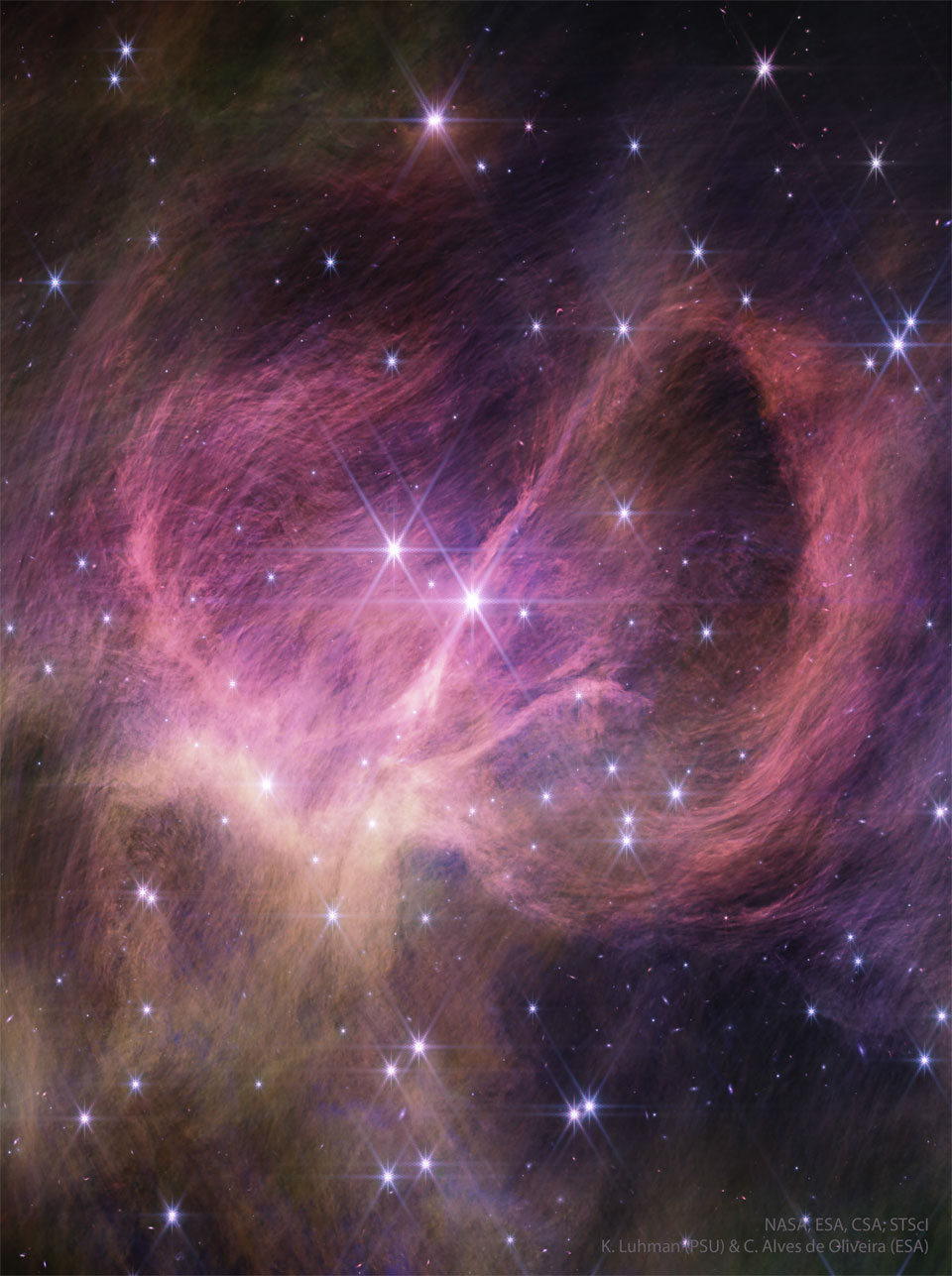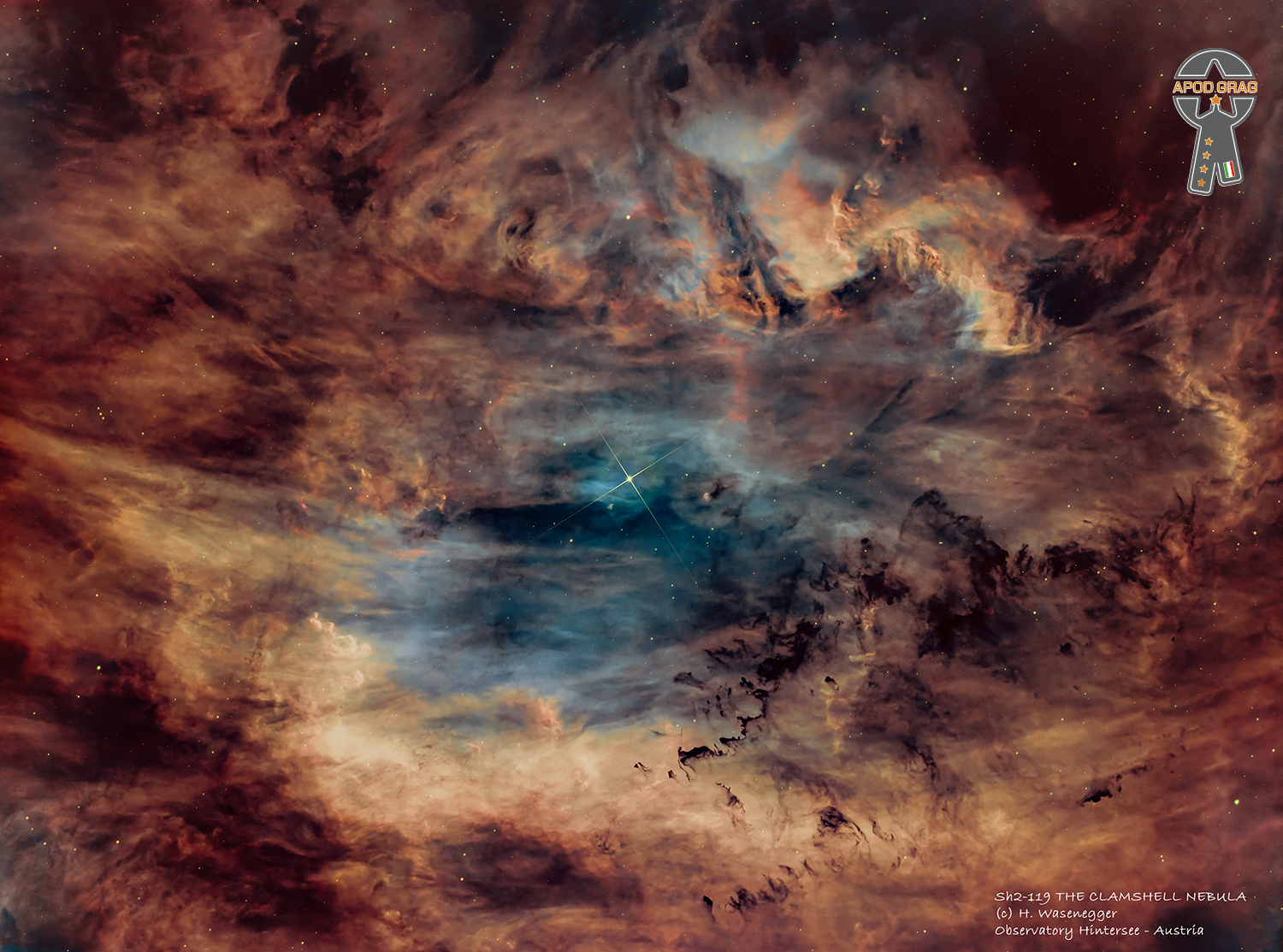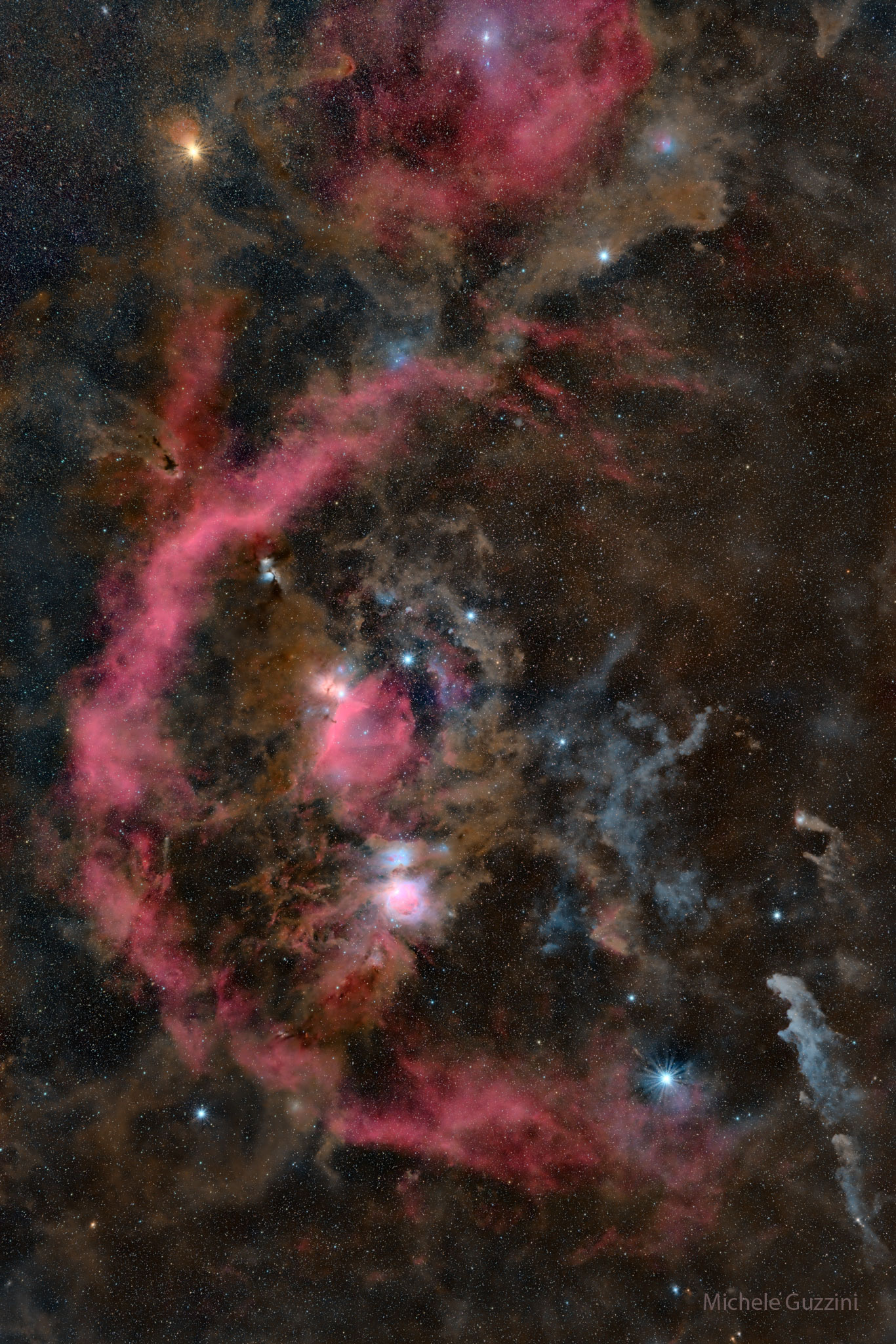Blog
Horace Parlan (January 19, 1931 – February 23, 2017) was an American pianist and composer known for working in the hard bop and post-bop styles of jazz. In addition to his work as a bandleader Parlan was known for his contributions to the Charles Mingus recordings Mingus Ah Um and Blues & Roots. He was born in Pittsburgh, Pennsylvania, United States. In his birth year, Parlan was stricken with polio, resulting in the partial crippling of his right hand. The handicap contributed to his development of a particularly “pungent” left-hand chord voicing style, while comping with highly rhythmic phrases with the right. Between 1952 and 1957, he worked in Washington, D.C., with Sonny Stitt, then spent two years with Mingus’ Jazz Workshop. In 1973, Parlan moved to Copenhagen, Denmark. He later settled in the small village of Rude in southern Zealand. In 1974, he completed a State Department tour of Africa with Hal Singer.
more...IC 348 is a young star cluster that illuminates surrounding filamentary dust. The stringy and winding dust appears pink in this recently released infrared image from the Webb Space Telescope. In visible light, this dust reflects mostly blue light, giving the surrounding material the familiar blue hue of a reflection nebula. Besides bright stars, several cool objects have been located in IC 348, visible because they glow brighter in infrared light. These objects are hypothesized to be low mass brown dwarfs. Evidence for this includes the detection of an unidentified atmospheric chemical, likely a hydrocarbon, seen previously in the atmosphere of Saturn. These objects appear to have masses slightly greater than known planets, only a few times greater than Jupiter. Together, these indicate that this young star cluster contains something noteworthy — young planet-mass brown dwarfs that float free, not orbiting any other star. This image from the NIRCam (Near-Infrared Camera) instrument on the NASA/ESA/CSA James Webb Space Telescope shows the central portion of the star cluster IC 348. Astronomers combed the cluster in search of tiny, free-floating brown dwarfs: objects too small to be stars but larger than most planets. They found three brown dwarfs that are less than eight times the mass of Jupiter. The smallest weighs just three to four times as much as Jupiter, challenging theories for star formation. The wispy curtains filling the image are interstellar material reflecting the light from the cluster’s stars — what is known as a reflection nebula. The material also includes carbon-containing molecules known as polycyclic aromatic hydrocarbons, or PAHs. The bright star closest to the centre of the frame is actually a pair of type B stars in a binary system, the most massive stars in the cluster. Winds from these stars may help sculpt the large loop seen on the right side of the field of view. [Image description: Wispy hair-like filaments of pink-purple fill the middle of the image, curving left and right on either side of the centre. On the right, the filaments form a dramatic loop that seems to extend toward the viewer. At lower left are additional yellowish filaments. Two prominent, bright stars near the centre of the image show Webb’s eight-point diffraction spikes. Dozens of fainter stars are scattered across the image.]

more...
Steven Mark Grossman (January 18, 1951 – August 13, 2020) was an American jazz fusion and hard bopsaxophonist.
Grossman was Wayne Shorter‘s replacement in Miles Davis‘s jazz-fusion band. He played with Chick Corea on the album “The Sun” in 1970, then, from 1971 to 1973, he was in Elvin Jones‘s band.
In the late 1970s, he was part of the Stone Alliance trio with percussionist Don Alias and bassist Gene Perla. The group released four albums during this period, including one featuring Brazilian trumpeter Márcio Montarroyos. The albums also feature an array of other musicians. They went on to release three live reunion albums during the 2000s.
more...David Ruffin (born Davis Eli Ruffin; January 18, 1941 – June 1, 1991 Whynot, MS) was an American soul singer and musician most famous for his work as one of the lead singers of the Temptations (1964–1968) during the group’s “Classic Five” period as it was later known. Ruffin was the lead voice on such famous songs as “My Girl” and “Ain’t Too Proud to Beg.”
Known for his unique raspy and anguished tenor vocals, Ruffin was ranked as one of the 100 Greatest Singers of All Time by Rolling Stone magazine in 2008 and again in 2023. He was inducted into the Rock and Roll Hall of Fame in 1989 for his work with the Temptations. Fellow Motown recording artist Marvin Gaye once said admiringly of Ruffin that, “I heard [in his voice] a strength my own voice lacked.”
more...Vassilis Tsitsanis (Greek: Βασίλης Τσιτσάνης 18 January 1915 – 18 January 1984) was a Greeksongwriter and bouzouki player. He became one of the leading Greek composers of his time and is widely regarded as one of the founders of modern Rebetiko and Laiko music. Tsitsanis wrote more than 500 songs and is still remembered as an extraordinary composer and bouzouki player.
Tsitsanis was born in Trikala, in Thessaly, Greece. His family came from the region of Epirus. He has been described as having been an Aromanian, and his surname Tsitsanis could indicate some connection with the Aromanians of Metsovo. He was the only figure performing rebetiko at his time coming from the Greek mainland and not from the islands. This may be the reason why he was sometimes known as “the Vlach” by his fellow musicians, although this could be due to the actually Aromanian ethnic origin of Tsitsanis (as Aromanians are known as Vlachs in Greece). It is also rumored that Stratos Pagioumtzis gave him this nickname. Tsitsanis was also nicknamed “Tsilias”.
more...Aloysius Tyrone Foster (born January 18, 1943) is an American jazz drummer. Foster’s professional career began in the mid-60s, when he played and recorded with hard bop and swing musicians including Blue Mitchell and Illinois Jacquet. Foster played jazz fusion with Miles Davis during the 70s and was one of the few people to have contact with Davis during his retirement from 1975–1980. During Davis’s retirement, Foster continued to play and record acoustic jazz with Sonny Rollins, Dexter Gordon, McCoy Tyner, Horace Silver, and other band leaders. Foster played on Miles Davis’s 1981 comeback album The Man with the Horn, and was the only musician to play in Davis’s band both before, and after, his retirement. After leaving Davis’s band in the mid-80s, Foster toured and recorded with Herbie Hancock, Sonny Rollins, Joe Henderson, and many other band leaders, primarily working in acoustic jazz settings. Foster has also released several solo albums under his own name, starting with Mixed Roots in 1978.
Foster was born in Richmond, Virginia, United States, and grew up in New York. He began playing drums at the age of 13 and made his recording debut on Blue Mitchell‘s, The Thing to Do, at age 20.
He joined Miles Davis‘s group when Jack DeJohnette left in 1972, and played with Davis until 1985. In his 1989 autobiography, Davis described the first time he heard Foster play live in 1972 at the Cellar Club in Manhattan: “He [Foster] knocked me out because he had such a groove and he would just lay it right in there. That was the kind of thing I was looking for. Al could set it up for everybody else to play off and just keep the groove going forever.”
more...It is located about 2 degrees west of the North America Nebula , or 9 degrees west of the bright star Deneb ; it appears to envelop the star 68 Cygni , of fifth magnitude . It can be observed with a medium-power amateur telescope and shows itself very well in long-exposure photographs.
Its shape appears similar to two shells that are arranged to the east and west of 68 Cygni; the eastern part is the largest. In the southern part, thin filaments and cocoons of dark nebulae are visible , which contrast strongly both with the light of the nebula and with the rich star field in the background. The distance of Sh2-119 is estimated at 2200 light years from us.

Michael Kevin Taylor (born 17 January 1949) is an English guitarist, best known as a former member of John Mayall’s Bluesbreakers (1967–1969) and the Rolling Stones (1969–1974). As a member of the Stones, he appeared on Let It Bleed (1969), Get Yer Ya-Ya’s Out! The Rolling Stones in Concert (1970), Sticky Fingers (1971), Exile on Main St. (1972), Goats Head Soup (1973) and It’s Only Rock ‘n Roll (1974).
Since leaving the Rolling Stones in December 1974, Taylor has worked with numerous other artists and released several solo albums. From November 2012 onwards he participated in the Stones’ 50th-Anniversary shows in London and Newark, and in the band’s 50 & Counting tour, which included North America, Glastonbury Festival and Hyde Park in 2013. He was ranked 37th in Rolling Stone magazine’s 2011 list of the 100 greatest guitarists of all time. Guns N’ Roses guitarist Slash states that Taylor had the biggest influence on him.
more...Eartha Mae Kitt (born Keith; January 17, 1927 – December 25, 2008) was an American singer and actress known for her highly distinctive singing style and her 1953 recordings of “C’est si bon” and the Christmas novelty song “Santa Baby“.
Kitt began her career in 1942 and appeared in the 1945 original Broadway theatre production of the musical Carib Song. In the early 1950s, she had six US Top 30 entries, including “Uska Dara” and “I Want to Be Evil“. Her other recordings include the UK Top 10 song “Under the Bridges of Paris” (1954), “Just an Old Fashioned Girl” (1956) and “Where Is My Man” (1983). Orson Welles once called her the “most exciting woman in the world”. She starred as Catwoman in the third and final season of the television series Batman in 1967.
In 1968, her career in the U.S. deteriorated after she made anti-Vietnam War statements at a White Houseluncheon. Ten years later, Kitt made a successful return to Broadway in the 1978 original production of the musical Timbuktu!, for which she received the first of her two Tony Award nominations. Her second was for the 2000 original production of the musical The Wild Party. Kitt wrote three autobiographies.
Kitt found a new generation of fans through her roles in the Disney films The Emperor’s New Groove(2000), in which she voiced the villainous Yzma, and Holes (2003). She reprised the role as Yzma in the direct-to-video sequel Kronk’s New Groove (2005), as well as the animated series The Emperor’s New School (2006–2008). Her work on the latter earned her two Daytime Emmy Awards. She posthumously won a third Emmy in 2010 for her guest performance on Wonder Pets!
more...Billy Harper (born January 17, 1943) is an American jazz saxophonist, “one of a generation of Coltrane-influenced tenor saxophonists” with a distinctively stern, hard-as-nails sound on his instrument.
He was born in Houston, Texas, United States. In 1965, Harper earned a Bachelor of Music degree from the University of North Texas.
Harper has played with some of jazz’s greatest drummers; he served with Art Blakey‘s Messengers for two years (1968–1970); he played very briefly with Elvin Jones (1970), he played with the Thad Jones/ Mel Lewis Orchestra in the 1970s, and was a member of Max Roach‘s quartet from 1971–1978. In 1979, Harper formed his own group, touring with it and documenting its music on the recording Billy Harper Quintet in Europe, and he was featured as a soloist on a 1983 recording,
more...Cedar Anthony Walton Jr. (January 17, 1934 – August 19, 2013) was an American hard bop jazz pianist. He came to prominence as a member of drummer Art Blakey‘s band, The Jazz Messengers, before establishing a long career as a bandleader and composer. Several of his compositions have become jazz standards, including “Mosaic”, “Bolivia“, “Holy Land”, “Mode for Joe” and “Ugetsu/Fantasy in D”.
Walton was born and grew up in Dallas, Texas. His mother Ruth, an aspiring concert pianist, was his first teacher, and took him to jazz performances around Dallas. Walton cited Nat King Cole, Bud Powell, Thelonious Monk and Art Tatum as his major influences on piano. He began emulating these artists’ recordings from an early age.
more...World
more...An Orion only revealed with long exposure digital camera imaging and post– processing. Here the cool red giant Betelgeuse takes on a strong orange tint as the brightest star on the upper left. Orion‘s hot blue stars are numerous, with supergiant Rigel balancing Betelgeuse on the lower right, and Bellatrix at the upper right. Lined up in Orion’s belt are three stars all about 1,500 light-years away, born from the constellation’s well-studied interstellar clouds. Just below Orion’s belt is a bright but fuzzy patch that might also look familiar — the stellar nursery known as Orion’s Nebula. Finally, just barely visible to the unaided eye but quite striking here is Barnard’s Loop — a huge gaseous emission nebula surrounding Orion’s Belt and Nebula discovered over 100 years ago by the pioneering Orion photographer E. E. Barnard.

Helen Folasade Adu CBE ; born 16 January 1959), known professionally as Sade Adu or simply Sade , is a Nigerian-born British singer, known as the lead vocalist of her band Sade. One of the most successful British female artists in history, she is often recognised as an influence on contemporary music.Her success in the music industry was recognised with the Officer of the Order of the British Empire in 2002, and she was made Commanderin the 2017 Birthday Honours.
Sade was born in Ibadan, Nigeria, and was brought up in England from the age of four. She studied at Saint Martin’s School of Art in London and gained modest recognition as a fashion designer and part-time model before joining the band Pride in the early 1980s. After gaining attention as a performer, she formed the band Sade, and secured a recording contract with Epic Records in 1983.
A year later the band released the album Diamond Life, which became one of the era’s best-selling albums and the best-selling debut by a British female vocalist. In July 1985, Sade was among the performers at the Live Aid charity concert at Wembley Stadium, and the next year, she appeared in the film Absolute Beginners. The band released their third album (Stronger Than Pride) in 1988, and a fourth album (Love Deluxe) in 1992. The band went on hiatus in 1996 after the birth of Sade’s child.
After eight years without an album, the band reunited in 1999 and released Lovers Rock in 2000. The album departed from the jazz-inspired inflections of their previous work, featuring mellower sounds and pop compositions. The band produced no more music until the release of Soldier of Love, ten years later. Since then, they have released two songs, “Flower of the Universe” for the soundtrack of Disney‘s A Wrinkle in Time, and “The Big Unknown“, part of the soundtrack of Steve McQueen‘s film Widows.
more...Henry Bertholf “Spike” Robinson (January 16, 1930 – October 29, 2001) was an American jazz tenor saxophonist. He began playing at age twelve, recording on several labels, including Discovery, Hep and Concord. However, he sought an engineering degree and followed that profession for nearly 30 years. In 1981 he returned to recording music. Robinson was born in Kenosha, Wisconsin on January 16, 1930.
more...More Posts
- Julian Priester Day
- World Music with Paco De Lucia
- Daily Roots with Alton Ellis & the Heptones
- The Cosmos with Sharpless 2-106
- John Medeski Day
- David Honeyboy Edwards Day
- World Music with Odpoczno
- Daily Roots with Ras Tweed
- The Cosmos with M8
- Johnny “Big Moose” Walker Day
- Elmo Hope Day
- Shad Collins Day
- World Music with Eleftheria Arvanitaki
- Daily Roots with Israel Vibration
- The Cosmos with NGC 1187
- Reggie Workman Day
- Big Bill Broonzy Day
- World Music with Very Be Careful
- Daily Roots with Uwe Banton
- The Cosmos with M20